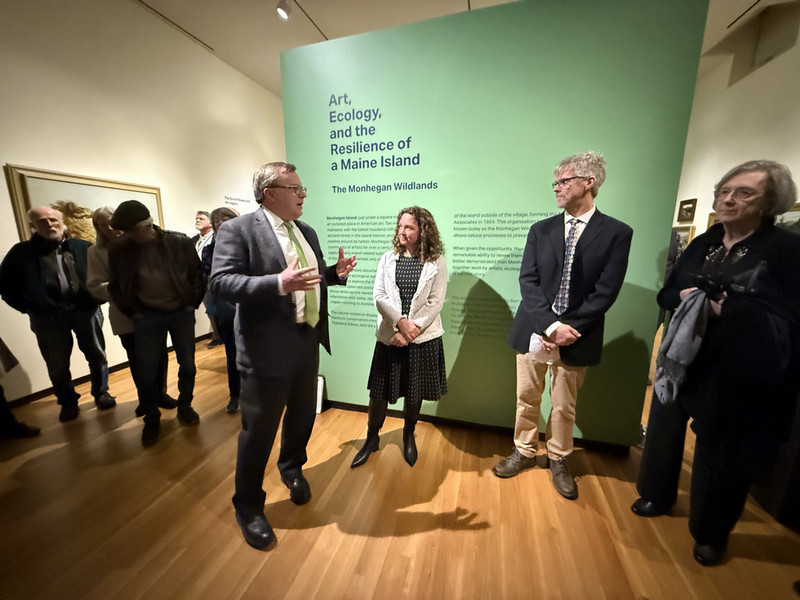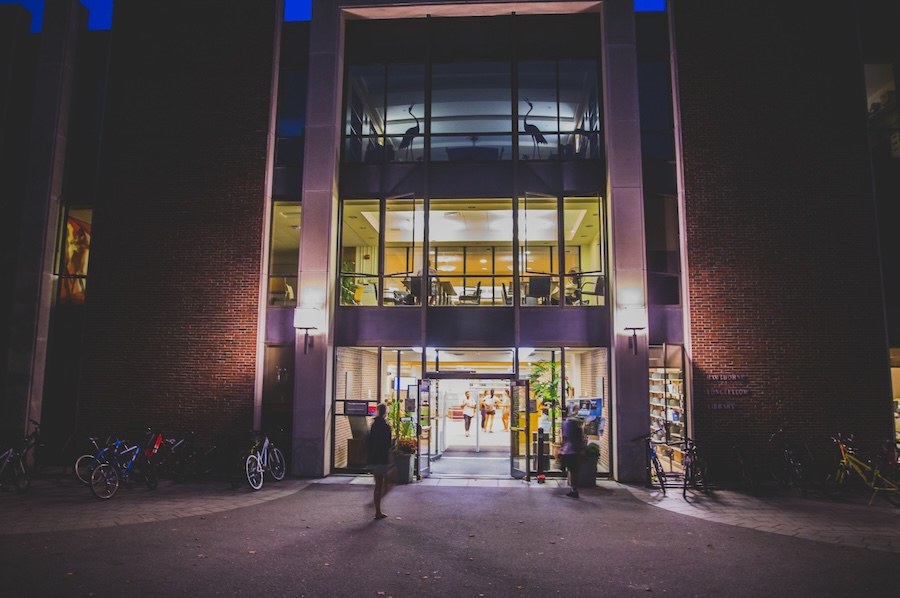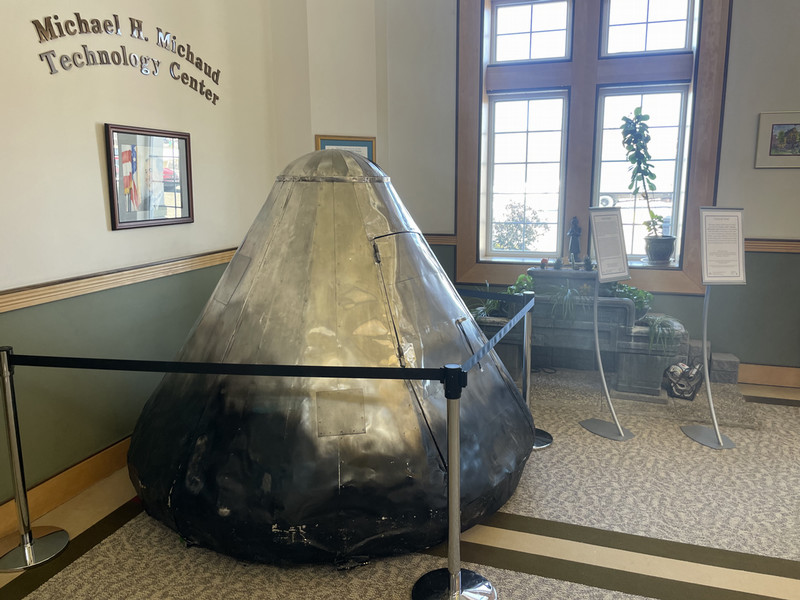A Curator's Tour of 'There is a Woman in Every Color'
By Kyubin Kim ’22Coinciding with the Office of Development and Alumni Relations' event celebrating the fiftieth anniversary of women at Bowdoin, thirty visitors recently joined curator Elizabeth Humphrey ’14 for a tour of There is a Woman in Every Color: Black Women in Art at the Bowdoin College Museum of Art (BCMA).
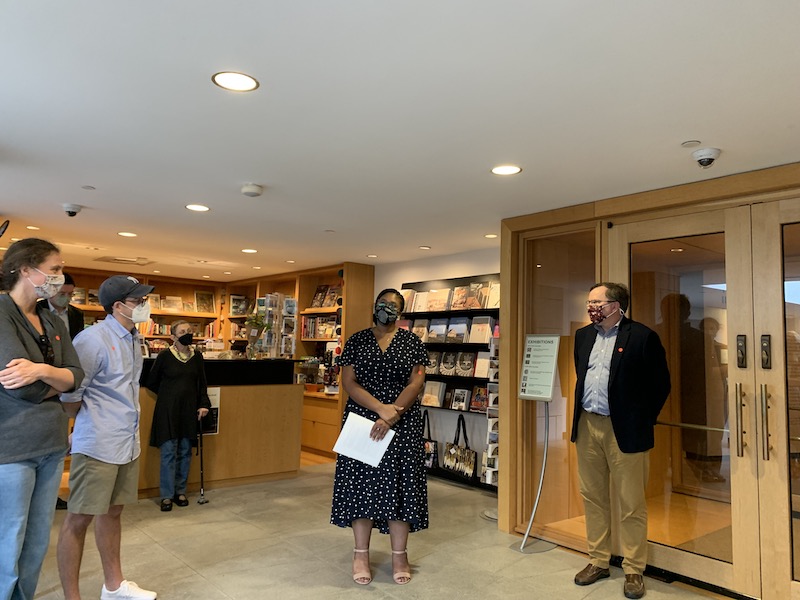
The exhibition, which the New York Times recommended as a show to see this season, examines the representation of Black women in America over two centuries.
To introduce the show, Humphrey discussed the exhibition's conception during the AF/AM/50 celebration in 2019. That event marked fifty years of Africana studies, the African American Society, and the John Brown Russwurm African American Center at Bowdoin.
Africana studies faculty Tess Chakkalakal and Judith Casselberry had approached the Museum to inquire about art that depicts Black women’s lives in the eighteenth and nineteenth centuries. The notable absence of Black women in the archives raised a pivotal question for Humphrey, who was then the Museum's curatorial assistant and manager of student programs. “Where can one find Black women in art?” she wondered.
Few exhibitions have focused on representations of Black or African American people, African American art, or the African diaspora, she said. The last time the BMCA had an exhibition centered on Blackness in art was in 1964, in an exhibition curated by National Portrait Gallery Director and former director of the BCMA Marvin Sadik called The Portrayal of the Negro in American Painting.
Moreover, the specific absence of Black women in art and the scarcity of representation of Black women as artistic subjects prompted Humphrey to bring these women out from the margins. Some of the pieces on display were recently acquired by the Museum in order to fill in the gaps in its collection.
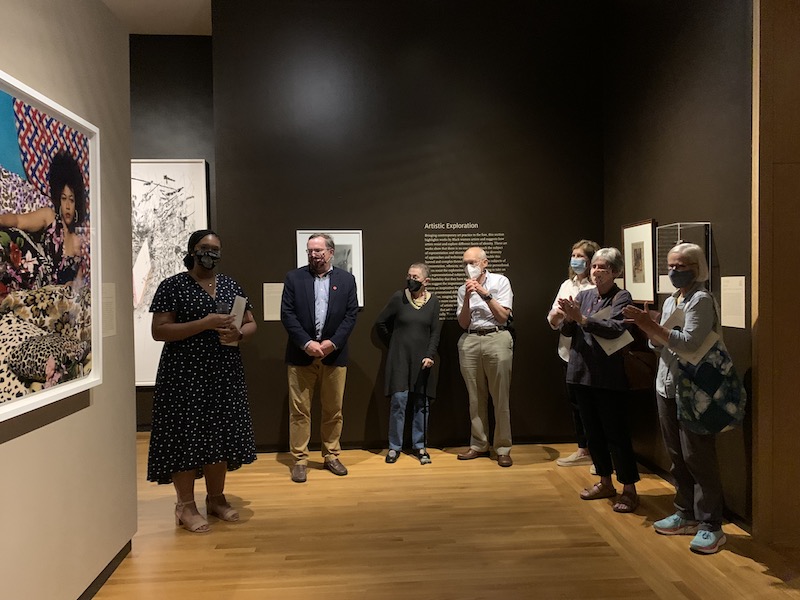
“Who is missing when you’re walking in a museum? Whose stories are told?” asks Humphrey. “Whose stories are not told?”
To frame a cohesive narrative that would showcase as many facets of Black women in art as possible, Humphrey split the exhibition into three thematic sections: the problems of representing, being represented, and the burden of representation.
Humphrey began by discussing patterns of visibility of Black women in art, pointing to the historical ways of representing Black women using three primary tropes: jezebel, mammy, and the tragic mulatto. She stopped to briefly discuss how painter Eastman Johnson’s Dinah, Portrait of a Negress (ca. 1867) portrays an archetypical stock figure associated with enslaved Black women.
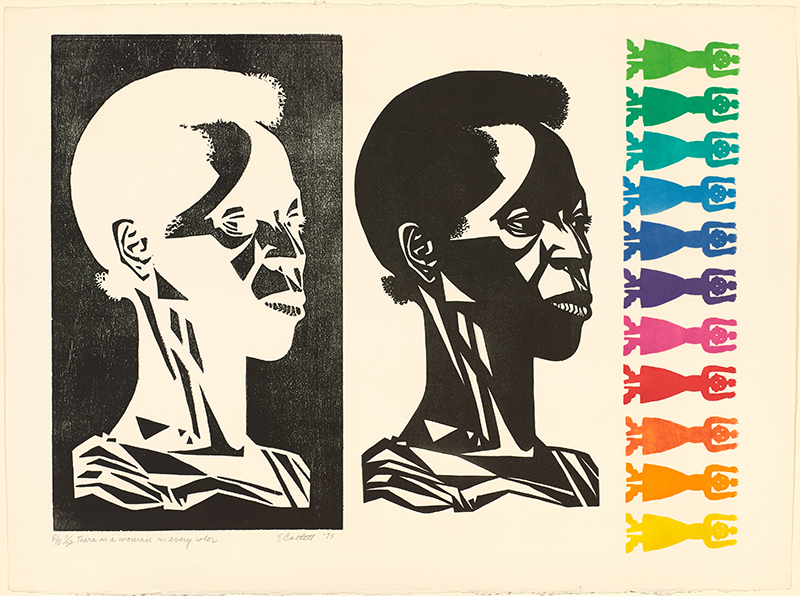
There is a Woman in Every Color, color linoleum cut, screen print, and woodcut by Elizabeth Catlett. Museum purchase, Lloyd O. Marjorie. Strong Coulter Fund, Bowdoin College Museum of Art. © 2021 Catlett Mora Family Trust/Licensed by VAGA at Artists Rights Society (ARS), New York. Photo by Luc Demers. [catlett-bowdoin.jpg]
Walking visitors through a description of Elizabeth Catlett’s print, There is a Woman in Every Color (1975)—which provided the title for the exhibition—Humphrey interpreted the print’s black and white binary as a call for racial equality. For the artist, Black identities and experiences are central to the framework of inclusion and equity. Humphrey explained that she chose to title the exhibition after Catlett’s work because “the act of centering Black women echoes the spirit of the exhibition.”
Next, Humphrey discussed the Black female nude in Barkley L. Hendricks’s Sister Lucas (1975), interrogating what it means to depict someone of African descent. Humphrey noted that the woman’s natural afro hairstyle is a nod to the Black is Beautiful movement of the 1960s. She also observed that the portrait looks highly individualistic, suggesting that Hendricks had employed a Black model rather than relying on a stereotype.





Humphrey went on to discuss Maine art relevant to the theme of labor force. The tour stopped at Thimble belonging to Phebe Ann Jacobs (nineteenth century) and the Narrative of Phebe Ann Jacobs, or, “Happy Phebe,” by Mrs. T.C. Upham (c. 1850). Humphrey explained that Jacobs was born enslaved in 1785 and moved to Maine to work for Bowdoin’s third president, William Allen. When Jacobs was freed, she ended up staying in the Brunswick area where she was a laundress for Bowdoin students and faculty. The only written record of Jacobs does not mention slavery—a notable absence of the conditions that brought her to Maine. Humphreys asked the group, “What are we missing? How do we retrieve and recover lost histories?”
Humphrey then led the tour to Lorraine O’Grady’s letterpress collage Cutting Out CONYT 26 (1977/2017). She explained that O’Grady cut out phrases from the Sunday edition of the New York Times that resonated with her in 1977 and arranged them in a way that defined the culture of New York City through haiku-like poems. In 2017, the artist went back to reconfigure phrases to create new meanings. But what emerged from this project was that “what was resonant in the 1970s is resonant today,” Humphrey said.
The tour concluded with Mickalene Thomas’s print Tell Me What You’re Thinking (2016), which features a Black model in a flowered dress reclining in a sea of bold and colorful prints. Humphrey pointed out the importance of gaze as a through-line in the exhibition, imbuing the power of the gaze in the relationship between artist, subject, and viewer. The model’s challenging stare highlights a woman's power over her body and agency as well as the artist’s positionality in the community they are portraying.
At the end of the tour, Humphrey was asked what surprised her the most while curating the exhibition. “What surprised me was that I was unsurprised,” she responded. She encountered expected challenges in sourcing the art as well as the histories she was looking for. Currently a PhD student of art history at the University of Delaware, Humphrey said, “It was a reminder of how difficult it is to do the work I want to do, regarding absences and gaps in history.”
Humphrey has also developed an online supplement for There is a Woman in Every Color: Black Women in Art, intended as a companion to the exhibition in the galleries at the Bowdoin College Museum of Art. The exhibition will be on view at the BCMA from September 16, 2021, to January 30, 2022. It has been confirmed to be a traveling exhibition and anticipates future showings in El Paso, Texas, and Duluth, Minnesota.

